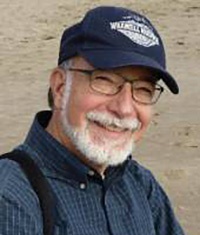Best Recent Publication
Citationist: Seth Busetti
Recipient: William L. Ellsworth
Injection-induced earthquakes, Science, v. 341, DOI: 10.1126/science.1225942
Citation for AAPG Petroleum Structure and Geomechanics Division 2016 Best Paper Awards (category (ii) Best Recent Publication award)
I am pleased to recognize Injection-Induced Earthquakes, the 2013 paper by W.L. Ellsworth, as the winner of the 2016 Best Recent Paper Award for the AAPG Petroleum Structure and Geomechanics Division.
The most impactful scientific publications are technically informative, timely and contextually relevant, and challenge new ways of thinking. Ellsworth’s review of injection-induced earthquakes is highly successful in each of those ways. The article provides a meaningful cross-section of the historical and technical context for induced and triggered seismicity, highlighting the most critical case studies and technical understanding that any induced-seismicity reader should be aware of, whether the reader is in the sphere of academic research, industry operations, or public policy. The paper concisely documents occurrences of induced seismicity ranging from the Rocky Mountain Arsenal injections in the 1960’s through modern newsworthy examples including hydraulic fracturing operations in British Columbia and waste water disposal operations in Oklahoma. The paper sufficiently summarizes but doesn’t linger on the technical details, instead offering a straightforward connection to the probabilistic U.S Seismic Hazard Map and “traffic light” systems and how modern induced seismicity compares to natural earthquakes such as the destructive events in in El Salvador and Spain.
Ellsworth manages to seamlessly weave the scientific, social, and political story together in a way that challenges each community to work towards solutions. In this way, the paper has proven its relevance, and since the time of its release, the link between subsurface operations and seismicity has increasingly been accepted by both the scientific community and state officials. This awareness has played out via several collaborative research projects, such as ongoing support for the Stanford Center for Induced and Triggered Seismicity, a boost in state-funded research grants to the Oklahoma Geological Survey to study seismicity, and new research program the Center for Integrated Seismicity Research at the Bureau of Economic Geology and The University of Texas.
Dr. Ellsworth’s paper captures the essence of what may prove to be an induced-seismicity renaissance and it serves as a quintessential communication tool for the topic of injection-induced earthquakes. On behalf of all of us who are working in this technical space, the community appreciate the effort put into this paper and we hope it incites more researchers, industry workers, and government officials to carefully assess our stewardship of the earth’s vast riches. One last memorable quote seems befitting, as Ellsworth describes it “…ignorance of the things that we understand we should know but do not leaves us vulnerable to unintended consequences of our actions.”
Seth Busetti
Response from William L. Ellsworth
Dear Bob and PSGD Committee Members,

William L. Ellsworth - "Best Recent Publication" Award Winner
I am deeply honored by the recognition of AAPG’s Petroleum Structure and Geomechanics Division for my 2013 paper “Injection-Induced Earthquakes.” In the past five years induced seismicity has become a frontburner issue for geophysicists, geologists, and petroleum engineers around the world. I certainly did not anticipate the scientific, economic, social and political issue it poses, particularly in North America and Europe. This paper was my attempt to put the then evolving earthquake crisis in Oklahoma and surrounding states into context. In particular, the context of a well developed scientific understanding in which AAPG and its members played an important early role. AAPG Memoir 10 published in 1968 recognized the potential hazard of injection-induced seismicity as the understanding of the Denver/Rocky Mountain Arsenal earthquake was just coming into focus. I was extremely fortunate to join the U. S. Geological Survey in Menlo Park in 1971 where the Rangely, Colorado, earthquake control experiment was then underway. The Rangely experiment validated the geomechanical theory through which elevated pore pressure can trigger earthquakes. Today, by working together, academic, industry and government scientists are making rapid progress to better understand the phenomenon and manage the hazard it poses.
I am also very touched by this award for a personal reason: I practically grew up at AAPG headquarters. My late father Dr. Elmer (Lefty) Ellsworth worked for AAPG for 25 years before retiring as an Honorary Member in 1972. Although he came in as a Stanford-trained petroleum geologist, over the course his career with AAPG he migrated to the job of convention manager and transformed the meeting of the AAPG, SEPM, GSA, CPEMRC and other professional organizations by widening their scope and elevating their value to the industry. For my part, I cut my teeth in the art of scientific debate as an undergraduate in the late 1960s with AAPG Bulletin Managing Editor Art Meyerhoff. The then emerging understanding of Plate Tectonics seemed simple when explained to me by Stanford Professors, but Art knew many things. Perhaps we today know many things about injection-induced earthquakes, but also have much more to learn.
And so it is with deep appreciation that I thank the Petroleum Structure and Geomechanics Division for this wonderful honor.
Sincerely,
William L. Ellsworth
Professor of Geophysics